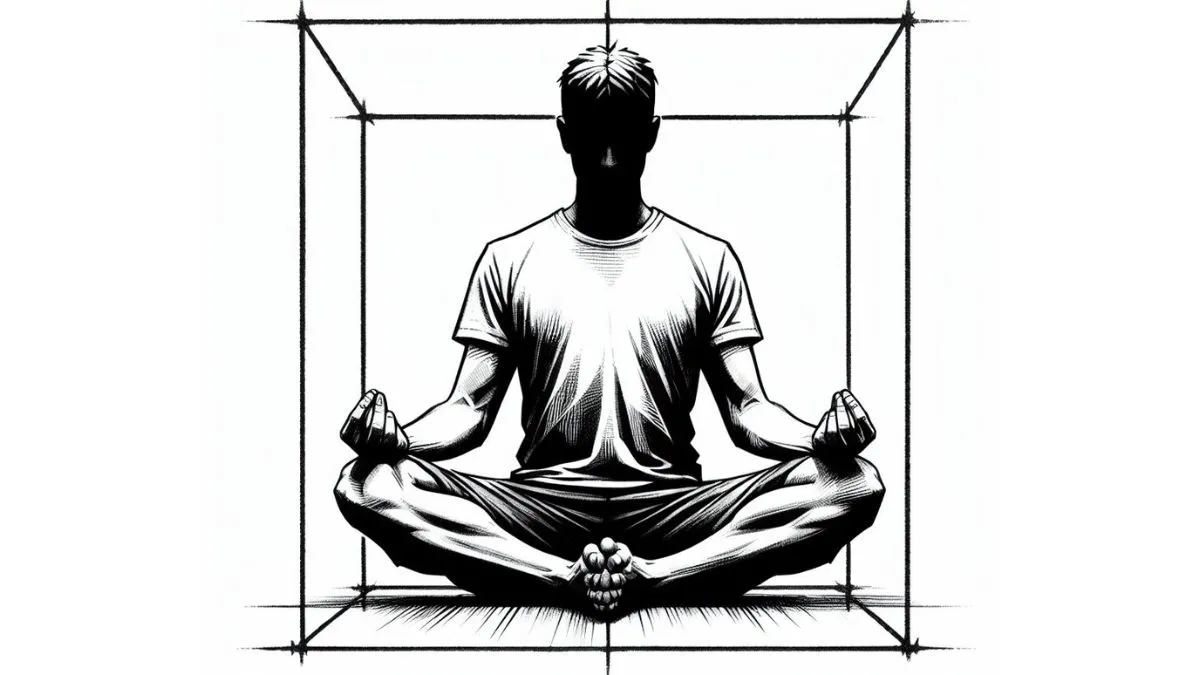Introduction
Siddhasana, also known as the Accomplished Pose, is a classical yoga posture designed specifically for meditation and pranayama (breath control) practices. The name “Siddhasana” is derived from the Sanskrit words “Siddha,” meaning accomplished or perfected, and “asana,” signifying a yoga pose. This asana holds significance in yogic tradition for its ability to promote stability, grounding, and inner focus. In this article, we explore the history, significance, benefits, step-by-step guide, and variations of practicing Siddhasana.
Unraveling the Roots of Siddhasana
Siddhasana has its origins in ancient Hatha Yoga, a traditional system of yogic practices. The pose is mentioned in classic yoga texts like the Hatha Yoga Pradipika and the Gheranda Samhita. Historically, Siddhasana has been practiced by accomplished yogis and sages to cultivate stillness, concentration, and spiritual progress.
Embracing the Accomplished State: Understanding Siddhasana
Siddhasana symbolizes the accomplished state of the practitioner—a state of inner realization and spiritual advancement. By sitting in this pose with a steady and calm mind, the yogi becomes an exemplar of tranquility and self-mastery. It provides a foundation for harnessing prana (life force energy) and directing it towards the higher realms of consciousness.
Step-by-Step Guide to Practicing Siddhasana

Follow these step-by-step instructions to gracefully embody the Accomplished Pose:
- Begin in a seated position with your legs extended in front of you.
- Bend your left knee and draw your heel towards your perineum (the space between the anus and the genitals).
- Place your right foot over the left ankle, allowing the toes to point downwards and rest on the floor.
- Align your knees, so the right knee is directly above the left knee, creating a stable base.
- Keep your spine straight and your shoulders relaxed.
- Place your hands on your knees, either in a mudra (hand gesture) or simply resting them with palms facing down.
- Gently close your eyes and bring your attention to your breath, preparing for meditation or pranayama.
The Grounding Benefits of Siddhasana
Siddhasana offers a range of physical, mental, and energetic benefits:
- a) Improved Posture: The pose encourages a straight spine, promoting good posture.
- b) Strengthened Pelvic Floor: It strengthens the pelvic floor muscles.
- c) Grounding and Stability: The pose creates a stable and grounded foundation for meditation.
- d) Enhanced Concentration: Practicing it enhances mental focus and concentration.
- e) Encourages Stillness: The pose supports a sense of inner stillness and tranquility.
Variations and Modifications
Siddhasana can be adapted to suit individual needs and abilities:
- a) Using Props: If sitting directly on the floor is uncomfortable, use a cushion or folded blanket for added support.
- b) Half Siddhasana: For a gentler version, practice with only one leg folded in and the other leg extended in front.
Precautions and Contraindications
While Siddhasana is generally safe for most practitioners, consider the following precautions:
- a) Knee or Hip Injuries: If you have knee or hip issues, practice Siddhasana with caution and use props for support.
- b) Pregnancy: Pregnant individuals should avoid this pose, especially in the later stages of pregnancy.
Conclusion
Siddhasana, the Accomplished Pose, is a gateway to inner stillness and spiritual progress. As practitioners sit with a straight spine and a calm mind, they embody the accomplished state of a yogi—one who has mastered the art of inner realization and self-mastery. Siddhasana becomes a sacred space for meditation and pranayama practices, allowing the practitioner to harness their life force energy and direct it towards higher levels of consciousness. With consistent practice and a focus on mindfulness, Siddhasana becomes a conduit to inner tranquility and the realization of one’s true potential—an accomplished state of being that unfolds with each breath and moment of stillness.


